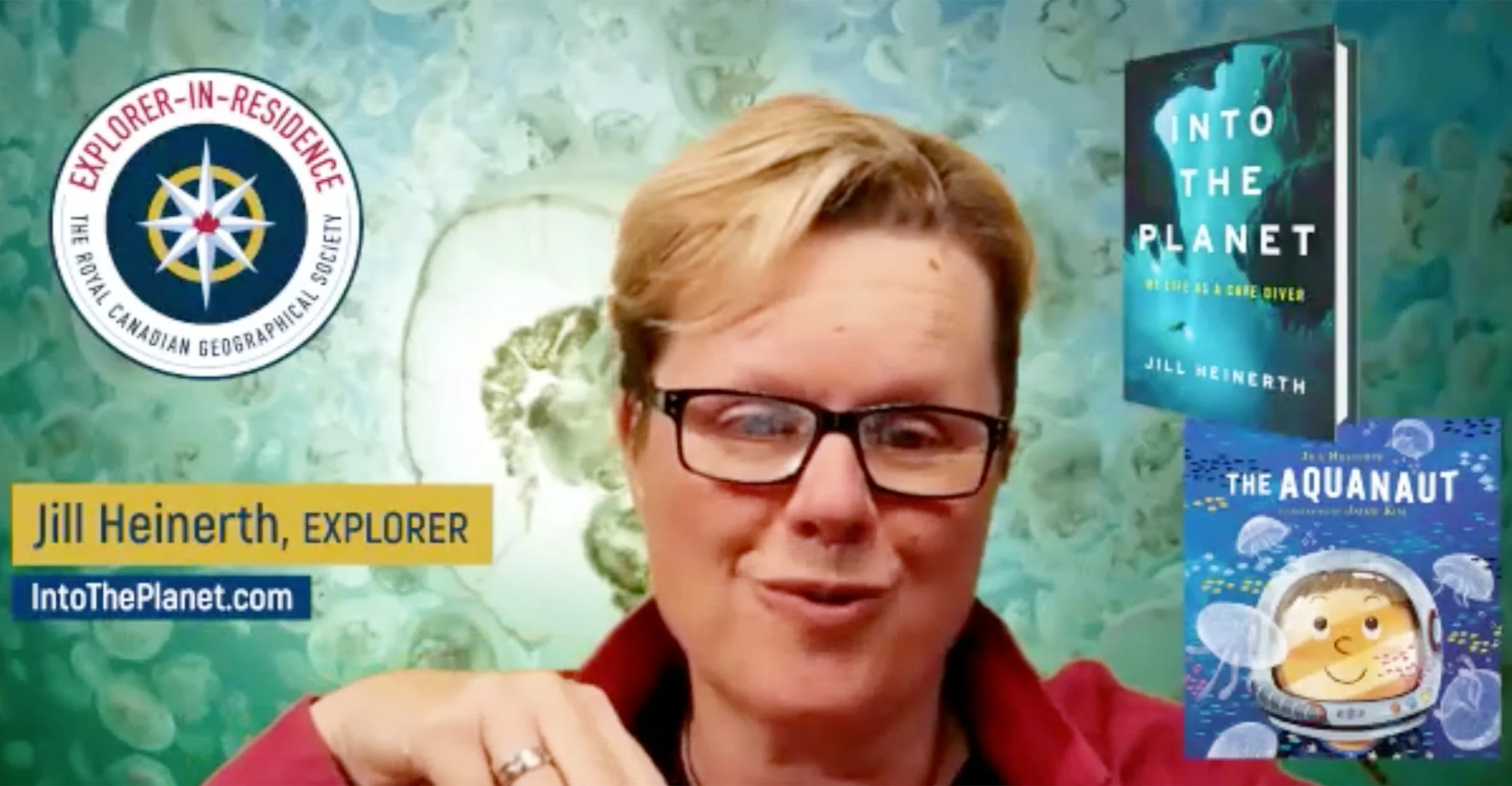‘Step into the darkness’: deep sea diver and author Jill Heinerth visits Chapman
Jill Heinerth spoke to Chapman students, faculty and staff for the Bensussen Distinguished Lecture in the Arts over Zoom. Photo courtesy of Lauren Bramlett
Exploding icebergs, never-before-seen caves and life-or-death stakes for even a tiny mistake: that’s just a day in the office for Wilkinson College of Arts, Humanities and Social Sciences’ most recent guest lecturer.
Photographer, author and cave diver Jill Heinerth led a Nov. 3 Zoom discussion for this year’s Bensussen Distinguished Lecture in the Arts. As a part of Wilkinson College’s Engaging the World Series, Heinerth’s lecture focused on her adventurous career and the process of documenting it through astounding photographs.
This years’ Engaging the World Series focuses on environmental justice. Simultaneous to capturing the unfamiliar beauty of deep ocean life, Heinerth’s photos also underline the troubling reality of climate change. Though Heinerth didn’t explicitly discuss the environment at length in the lecture, the grim outlook for the shelf-life of these habitats lingered in the subtext of each and every photograph.
On one occasion, shortly after taking a dive within the B-15 iceberg in Antarctica, Heinerth and her team watched from their boat as the iceberg exploded and turned to slush, adding to the already alarming volume of climate change-induced melting arctic ice.
“I’m 57 years old, and I’ve seen a lot of change in the ocean in my 30-plus years underwater,” Heinerth said. “It can be disheartening. There are places where we see no trash, although if we dissect a fish we’ll find plastic in their belly. There’s no part of the planet that’s unaffected by us humans.”
While most of Heinerth’s photography features rare wildlife or compelling habitats, she’s started taking photos of the trash as well, so people can see the full story of what’s happening underwater.
Heinerth wrote “Into the Planet: My Life as a Cave Diver” in 2019, a memoir detailing the adventures and struggles of her career and giving readers a look into the person behind the wetsuit. Wilkinson College partnered with Orange Public Library to host a Nov. 1 book club on the memoir preceding Heinerth’s lecture.
Chapman professor Jan Osborn (left) and Stephanie Takaragawa (right), Associate Dean of Academic Affairs, moderate a book club conversation for Jill Heinerth’s “Into the Planet” at Orange Public Library. MAYA BRAUNWARTH, Staff Photographer
Both a researcher and an artist, Heinerth’s interdisciplinarity made her an apt choice of speaker for a Wilkinson-sponsored event, as the college houses the widest range of fields of study at Chapman and is home to the university’s interdisciplinary minors. Jessica Bocinski, registrar of the Escalette Permanent Collection of Art and part of the team that helped coordinate the lecture, noted the value of Heinerth’s multifaceted career.
“So often in society, we put art and science on opposite ends of the spectrum, but in a lot of ways they’re really similar,” Bocinski said. “They’re about people trying to understand the underlying principles of life, and they’re just going about it in different ways. That curiosity about the world unites them. (Heinerth) expands the traditional idea of what an artist could be.”
Ty Madrigal, a freshman graphic design major, went into the Nov. 3 event anticipating a discussion on Heinerth’s accolades in the scientific field. However, his initial expectations were soon replaced by immense curiosity when Heinerth began detailing the intersection of art in her work.
“I went into this thinking (Heinerth) was a scientist and marine biologist, but then she started discussing her artistic process,” Madrigal said. “When you look, those are insane photographs. It’s complete storytelling; (Heinerth’s photos) look more alien than outer space. They look more imaginative than anything I’ve seen with my own eyes.”
Deep sea photographer and cave diver Jill Heinerth has pursued an underwater career for over 30 years, documenting her discoveries along the way. WikiCommons
Bocinski appreciated that Heinerth’s lecture detailed the process of obtaining these images — an endeavor that is not only dangerous by nature of the dive but requires the photographer to carry cumbersome and extensive technology at all times.
“A lot of times when we look at art and talk about art, we’re looking at just the finished product, and we’re not thinking about all of the performances, research, grant writing and preparation that goes into it,” Bocinski said. “(Heinerth’s) lecture was especially good at raising awareness about the time it takes to create any sort of art.”
Beyond discussing her own artistic process, Heinerth made a point of connecting the lessons she’s gleaned from her obscure career to messages all audiences can relate to. She compared the risk of her underwater ventures to feeling nervous about turning in an “edgy report” to a professor, making a point of how students might apply her knowledge into their own lives. Her prevailing message was to relentlessly press forward through fear.
“I’m not fearless,” Heinerth said. “I’m afraid every time I go diving. I want to dive with people that are also afraid, because we care about the outcome of our choices and decisions. We understand there’s a risk, and yet we choose to act ... (Embracing your fears is) what drives discovery and exploration. I know you’re not going to go swimming into underwater caves, but we all have those dark places in our lives, and we have to step into the darkness if we want to progress.”



